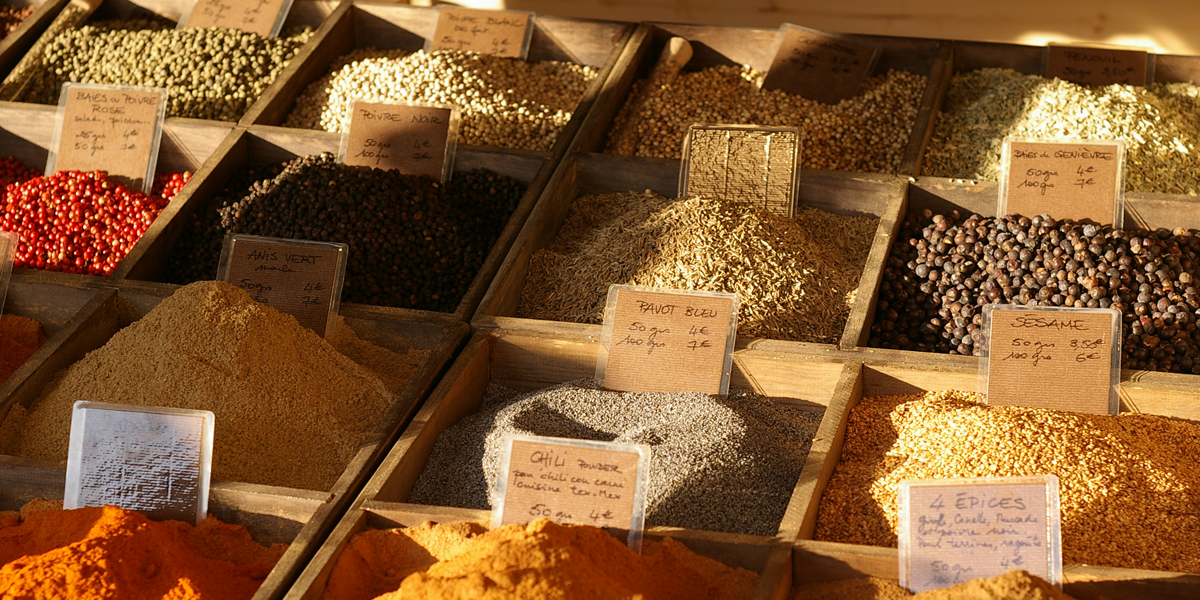Whether you’re moving into a new apartment or just inexperienced with cooking, stocking your pantry can be surprisingly daunting. Where do you start? What do you need? Sugar? Flour? Cornstarch (which is used for what, exactly?) And of course, most people have had the experience of filling a shopping cart with “staples” only to come home and find, in bewilderment, that they have nothing to actually eat.
Darya Rose, neuroscience P.hD and creator of the award-winning blog Summer Tomato, addresses this confusion in her book Foodist: Using Real Food and Real Science to Lose Weight Without Dieting. Offering simple, proven insights to the oft-intimidating culinary realm, she provides hope to the uncertain, inexperienced, and downright lazy cooks of the world. (For those who want additional guidance, Darya created an online cooking course, Foodist Kitchen).
Below are Darya’s ten pantry basics to help you turn any handful of ingredients into a delectable meal.
- Olive Oil: It’s healthy, you can cook just about anything in it, and it’s a key ingredient in nearly every salad dressing. Go for an affordable, cold-pressed option for cooking, and splurge on a fancier Extra Virgin option for dressings.
- Salt: Having two varieties of salt isn’t a preening indulgence. Use the carton of iodized table salt for cooking, and a grinder with chunky sea salt for topping dishes and salting meat and veggies.
- Pepper: This essential spice can add depth to almost any savory meal, but avoid the pre-ground stuff (seriously, it tastes like sawdust on a good day). A grinder with fresh whole peppercorns is your best bet.
- Vinegar: Don’t turn up your nose at this pungent cure-all. Vinegar adds acidity to foods, and you use it in many dishes just like you would use a squeeze of lemon or lime juice. The basics are rice vinegar (great for Asian food), red wine (good for tangy light salad dressings), and Balsamic (a classic for dressing any dish with Italian roots, and tasty on an avocado).
- Stock: Beef, chicken, or vegetable stock can live in your cupboard or your freezer for a long time, and having it on hand means you can make soup any day of the week. Plus, grains and legume tastes better when cooked in stock.
- Beans and Lentils: A great addition to any meal, you can cook dry beans or lentils in a large batch at the beginning of the week and supplement dishes when desired.
- Intact Grains: Whole grain isn’t whole grain unless it’s a complete, intact grain (whole wheat flour, for example, doesn’t do much more for you nutritionally than its bleached-out brother). Choose farro, barley, brown rice, quinoa, and oats over pasta and bread for your carbohydrate needs.
- Jarred/Canned Tomatoes: A can of crushed tomatoes can take some onions and mushrooms and turn them into a hearty sauce, bring some red veggie goodness into your meal when you’re low on fresh foods, and is one of the few forms of preserved vegetables that doesn’t sacrifice the nutritional benefits of the fresh version.
- Nuts: Walnuts, almonds, pecans, peanuts, cashews — practically any nut can bring a little bit of flavor and crunch, not to mention good fat and protein, to a range of sweet and savory dishes. Also benefitting from nuts? Breakfast bowls, smoothies, and salads.
- Spices: Feel free to shake this one up, but cinnamon, chili flakes, coriander, cumin seeds, curry powder, oregano, cayenne, paprika, garlic powder, and sesame seeds are a great place to start. With these ten spices, you’ll have flavors from all across the globe.
Now all you need is a good knife, a pot and a pan, and a little bit (OK, maybe a lot) of patience.





























